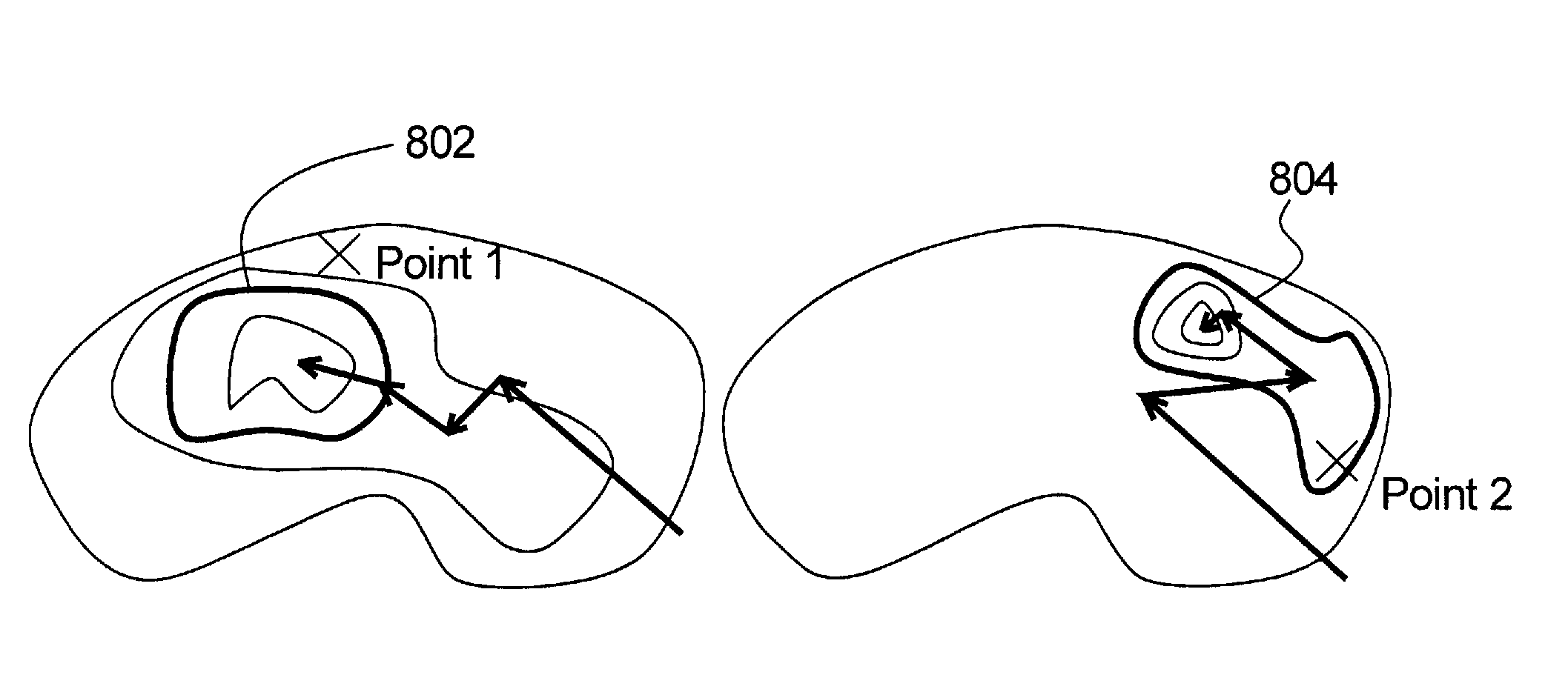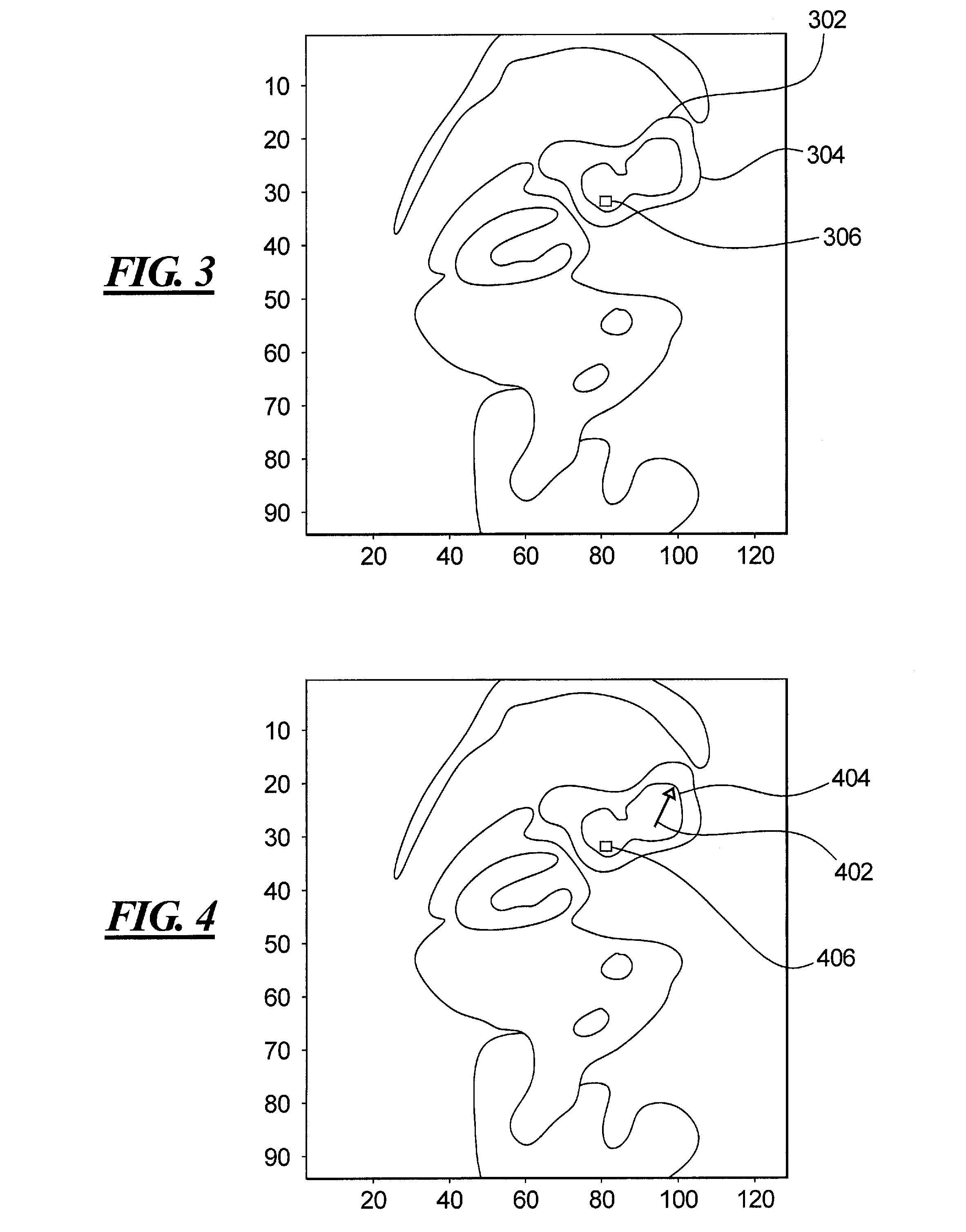Method and apparatus for identifying regions of interest in a medical image
a technology of image and region, applied in image enhancement, image data processing, instruments, etc., can solve the problems of increased difficulty, adjustment of threshold, and adjustment of difficulty
- Summary
- Abstract
- Description
- Claims
- Application Information
AI Technical Summary
Benefits of technology
Problems solved by technology
Method used
Image
Examples
first embodiment
[0077]FIG. 2 sets out the processes which are generally involved in the invention. A threshold (of intensity, for example of SUV values in an FDG-PET scan) is determined from the point in the image that the user clicked on (rather than requiring a separate step to update the threshold), and the corresponding click-label is extracted from the label image, that is, which local intensity maximum is the point associated with. Next, the position of the click-point in the sorted list of voxels is found. All voxels in the intensity sorted list up until this point that correspond to the click-label are extracted. Likewise the voxels of any child-labels that have merged into the click label up until this point are extracted and stored. The collection of voxels is then highlighted.
[0078]An example of the output of this process is shown in FIG. 3, which shows a coronal slice from a PET scan of a human torso. The circle 302 indicates a user click point and the black curve 304 indicates the anno...
second embodiment
[0086]FIG. 5 sets out the processes generally involved in the present invention. The hierarchy or tree structure of the result of the ICC pre-processing is used to detect a set of candidate regions or volumes of interest (VOIs), whose relationships are encoded by the hierarchical grouping. At least two kinds of relationships can exist: one VOI can encompass another, and two VOIs can merge. These relationships are established using a variable such as intensity, or gradient magnitude.
[0087]A subset of VOIs is obtained to be presented to the user, which is also arranged as a set of tree structures. Such a subset may, for example, consist of those VOIs with the greatest contrast of intensity relative to the surrounding area, since these are deemed likely to be of interest. The user may then choose to accept some or reject others in a final group of VOIs. Alternatively, it may be possible that none of the selected subset of VOIs is sufficiently accurate in the user's judgment. In this ca...
third embodiment
[0103]FIG. 10 sets out the processes which are generally involved in the invention. This embodiment allows a freeform bounding region to be generated that delineates the largest possible region that can be selected without including additional regions, features or structures in the image which are not of interest to the user. This is referred to as the maximal bounding region. A user need not carefully select a bounding region, but rather may select any threshold (restricted automatically by the bounding region as set out below) without fear of including an extraneous feature or structure within the ROI. In addition, a connected component algorithm may not need to be re-applied if the threshold is changed.
[0104]An example of this is illustrated in 2D in FIG. 11, where the image is an isocontour representation of the image in FIG. 1. The isocontor representation is shown for convenience, since each isocontor represents a possible threshold selection from which an ROI may be obtained....
PUM
 Login to View More
Login to View More Abstract
Description
Claims
Application Information
 Login to View More
Login to View More - R&D
- Intellectual Property
- Life Sciences
- Materials
- Tech Scout
- Unparalleled Data Quality
- Higher Quality Content
- 60% Fewer Hallucinations
Browse by: Latest US Patents, China's latest patents, Technical Efficacy Thesaurus, Application Domain, Technology Topic, Popular Technical Reports.
© 2025 PatSnap. All rights reserved.Legal|Privacy policy|Modern Slavery Act Transparency Statement|Sitemap|About US| Contact US: help@patsnap.com



